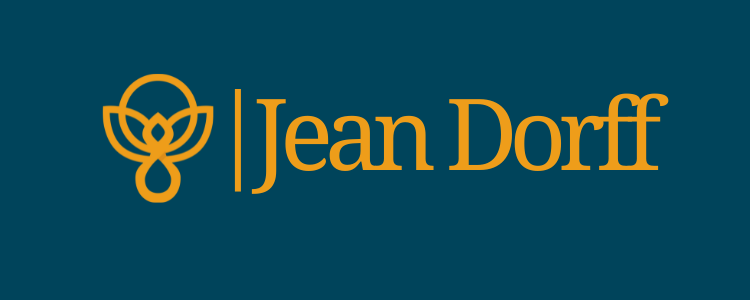Why Your Quietest Healing Moments Matter Most

The loudest transformations rarely leave the deepest imprints.
Our culture celebrates dramatic breakthroughs, visible transformations, and healing journeys that follow a neat, cinematic arc. We're taught to expect the cathartic breakdown, the pivotal realization, the moment everything changes. But what if true healing moves through us more subtly? What if the most profound transformations happen in the spaces between words, in micro-shifts of awareness, in the quiet adjustments of how we hold ourselves in the world?
This isn't about diminishing powerful moments of clarity. Rather, it's about expanding our recognition of what healing actually looks like in lived experience.
The body knows before we do. Trauma registers within our bodies at a cellular level, embedding itself in our nervous system, our posture, our breath. The path back to ourselves often begins not with grand revelations but with noticing – a slight ease in the shoulders, a deeper breath, a moment of being present without bracing.
The Myth of Dramatic Healing
We've inherited problematic narratives about healing. Television shows, films, and even therapeutic case studies often highlight the dramatic breakthrough moment – the session where everything changes, the confrontation that shifts a lifetime pattern, the emotional release that washes everything clean.
These stories aren't wrong. They're incomplete.
They miss the thousand tiny adjustments that precede and follow any significant shift. They overlook the quiet courage it takes to slightly adjust a boundary, to notice a trigger without being consumed by it, to choose a new response when every cell in your body is pulling toward the familiar.
The expectation of dramatic healing creates unnecessary pressure. It can make us dismiss our actual progress because it doesn't match the transformation we imagined.
Real healing often happens in the spaces between the stories we tell.
The Intelligence of Subtle Shifts
Your body is constantly speaking. Not in words, but in sensations, impulses, and micro-movements that contain profound intelligence.
When you begin to work with trauma, these subtle cues become your most reliable guides. Recognizing and working with somatic cues – slight shifts in posture, changes in breath, barely perceptible movements – helps reconnect you with your body's innate wisdom.
This reconnection is healing itself.
Consider these quiet markers of profound change:
A moment of pause where once there was immediate reaction
A slight softening in a chronically tense area of your body
Noticing a familiar trigger without being overwhelmed by it
Feeling an emotion move through you rather than becoming stuck
Speaking a small truth where you would have remained silent
None of these shifts announces itself dramatically. None fits neatly into the "breakthrough" narrative. Yet each represents a profound recalibration of your relationship with yourself and your experience.
The Somatic Language of Recovery
Your nervous system speaks in sensations, not sentences. Learning to listen to and interpret this language is central to trauma recovery.
The body holds patterns of protection developed in response to threat. These patterns – tension, constriction, disconnection – once served a vital purpose. They kept you safe when safety wasn't otherwise available.
Healing doesn't mean dramatically dismantling these patterns. It means gently expanding your capacity to be present with sensations that once felt overwhelming.
This expansion happens in small increments.
A client once described her healing as "learning to stay in the room with myself." Not a dramatic declaration of transformation, but a quiet acknowledgment of a profound shift – the ability to remain present with her own experience without dissociating or shutting down.
Mindful body awareness teaches you to accept rather than merely tolerate difficult emotions. You begin to recognize that sensations and feelings aren't permanent – they come and go like waves. This recognition itself is transformative, though it rarely announces itself with fanfare.
The Narrative Beneath the Narrative
Trauma disrupts our ability to tell coherent stories about ourselves and our experiences. Recovery involves reclaiming our narrative capacity – not just in words, but in the felt sense of our lives.
This reclamation often begins with noticing the smallest shifts in how we experience ourselves:
The subtle difference between "I am broken" and "I experienced something breaking."
The quiet recognition that a long-held belief about yourself might not be true.
The gentle allowing of a new possibility to exist alongside an old certainty.
These narrative shifts may never be spoken aloud. They may register only as a slight easing, a small opening where before there was constriction. Yet they represent profound healing.
Your internal narrative reshapes itself one word, one image, one sensation at a time.
The Revolutionary Power of Gentle Attention
Perhaps the most radical act in trauma recovery is simply paying attention. Not forcing change, not pushing for breakthrough, but bringing gentle, curious awareness to your experience as it unfolds.
This quality of attention itself is healing.
When you attend to subtle sensations with openness rather than judgment, you create the conditions for your system to reorganize itself. You offer yourself what trauma took away – the experience of being witnessed with compassion.
This witnessing doesn't need to be dramatic to be transformative.
A moment of noticing tension without immediately trying to fix it.
A breath that reaches slightly deeper into your body.
A fleeting sense of curiosity where shame usually lives.
Each of these represents a profound shift in your relationship with yourself – a quiet revolution that changes everything without announcing itself.
Honoring Your Quiet Transformations
If healing doesn't always announce itself dramatically, how do you recognize and honor your progress?
Start by expanding your definition of what counts as healing. The subtle shifts matter – perhaps even more than the dramatic breakthroughs.
Notice what you notice. Pay attention to small changes in how you experience yourself and the world. These might include:
Moments when you feel slightly more at ease in your body
Times when you recover more quickly from being triggered
Instances where you respond rather than react
Experiences of being present with difficult emotions without being overwhelmed
Small acts of self-trust or self-compassion
These quiet transformations may not make for dramatic stories. They may not even be visible to others. But they represent real, embodied healing that changes your lived experience from the inside out.
Your healing doesn't need witnesses to be profound.
The Courage of Incremental Change
There's a particular kind of courage in embracing subtle healing – the courage to trust a process you can't always see or explain.
When culture celebrates dramatic transformation, choosing to honor your own quiet unfolding requires conviction. It means valuing your embodied experience over external validation or predetermined narratives of what healing should look like.
This valuing itself is healing.
The most profound transformations often happen beneath the surface, in the quiet spaces between words and actions, in the subtle shifts of how you hold yourself in relation to your own experience.
These shifts may not make for dramatic stories. But they change everything.
Your quietest healing moments may well be your most powerful.
Trust them.

